What Role Did Art Play in Ancient Kushs Civilization
If you lot drive north from Khartoum along a narrow desert road toward the ancient city of Meroe, a breathtaking view emerges from across the delusion: dozens of steep pyramids piercing the horizon. No thing how many times you may visit, at that place is an awed sense of discovery. In Meroe itself, once the capital of the Kingdom of Kush, the road divides the metropolis. To the east is the royal cemetery, packed with shut to 50 sandstone and red brick pyramids of varying heights; many take broken tops, the legacy of 19th-century European looters. To the due west is the royal city, which includes the ruins of a palace, a temple and a royal bath. Each structure has distinctive architecture that draws on local, Egyptian and Greco-Roman decorative tastes—bear witness of Meroe's global connections.
Off the highway, men wearing Sudanese jalabiyas and turbans ride camels across the desert sands. Although the expanse is largely costless of the trappings of modern tourism, a few local merchants on straw mats in the sand sell pocket-sized clay replicas of the pyramids. Every bit you arroyo the imperial cemetery on foot, climbing large, rippled dunes, Meroe's pyramids, lined neatly in rows, rise as loftier as 100 anxiety toward the sky. "It's like opening a fairytale volume," a friend once said to me.
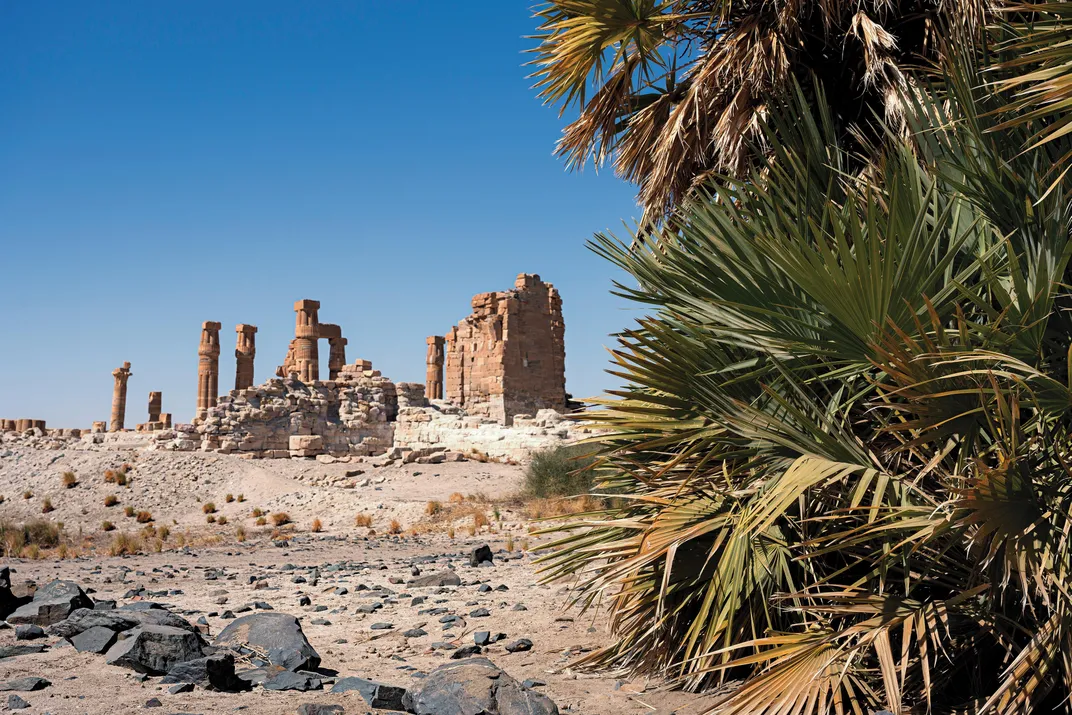
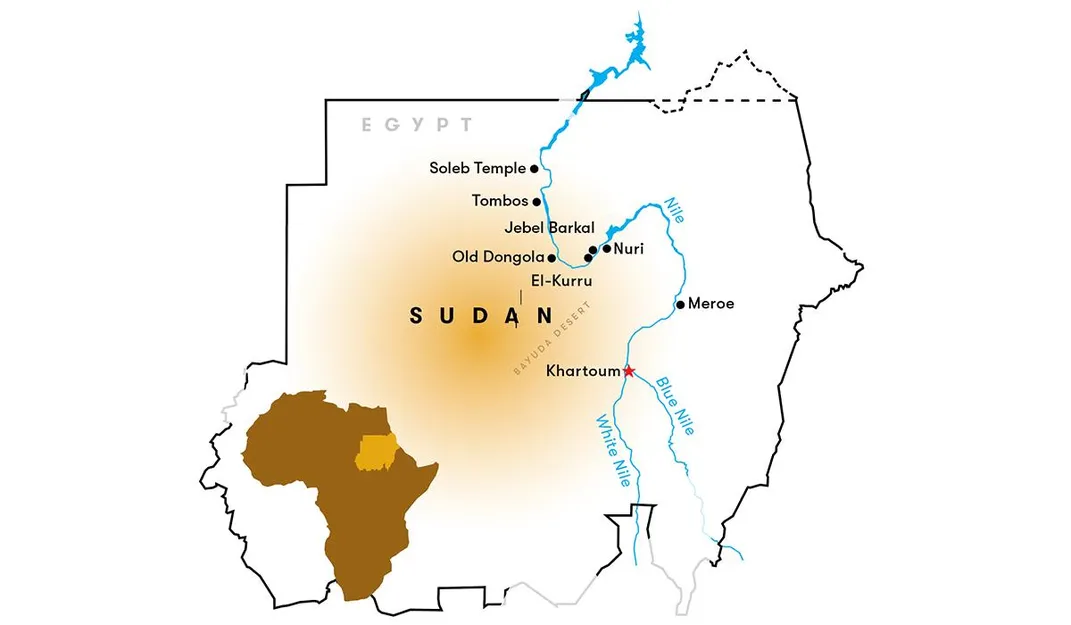
I first learned of Sudan'south boggling pyramids as a boy, in the British historian Basil Davidson's 1984 documentary series "Africa." Equally a Sudanese-American who was built-in and raised in the United States and the Middle East, I studied the history of ancient Egypt and Mesopotamia, the Levant, Persia, Greece and Rome—but never that of ancient Nubia, the region surrounding the Nile River between Aswan in southern Egypt and Khartoum in primal Sudan. Seeing the documentary pushed me to read as many books as I could about my homeland's history, and during annual vacations with my family I spent much of my time at Khartoum's museums, viewing ancient artifacts and temples rescued from the waters of Lake Nasser when Egypt's Aswan High Dam was built during the 1960s and '70s. Later, I worked equally a journalist in Khartoum, Sudan's capital, for shut to eight years, reporting for the New York Times and other news outlets about Sudan's fragile politics and wars. But every one time in a while I got to write near Sudan'due south rich and relatively little known aboriginal history. It took me more than 25 years to run into the pyramids in person, but when I finally visited Meroe, I was overwhelmed past a feeling of fulfilled longing for this place, which had given me a sense of nobility and a connectedness to global history. Like a long lost relative, I wrapped my arms around a pyramid in a hug.
The state south of Egypt, beyond the first cataract of the Nile, was known to the ancient earth by many names: Ta-Seti, or Land of the Bow, and then named because the inhabitants were expert archers; Ta-Nehesi, or Land of Copper; Ethiopia, or Land of Burnt Faces, from the Greek; Nubia, possibly derived from an ancient Egyptian word for golden, which was plentiful; and Kush, the kingdom that dominated the region between roughly 2500 B.C. and A.D. 300. In some religious traditions, Kush was linked to the biblical Cush, son of Ham and grandson of Noah, whose descendants inhabited northeast Africa.
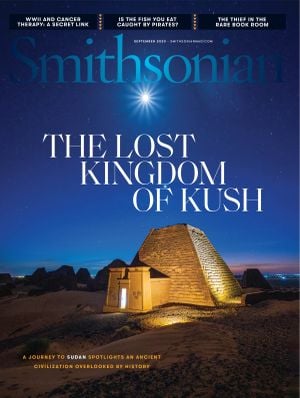
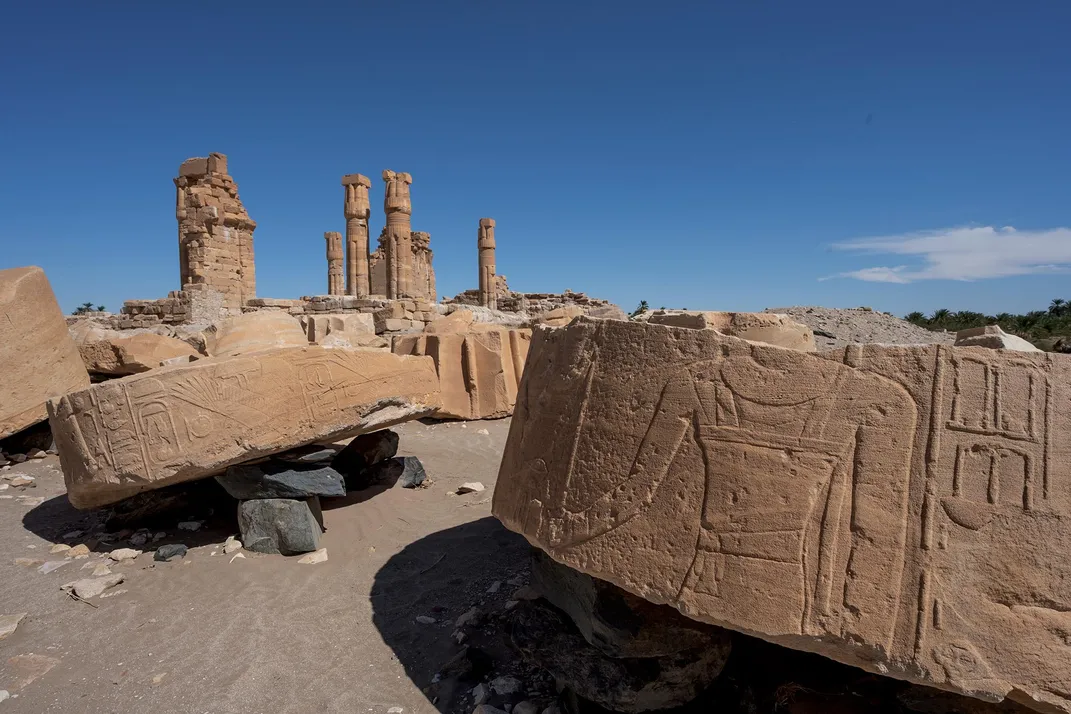
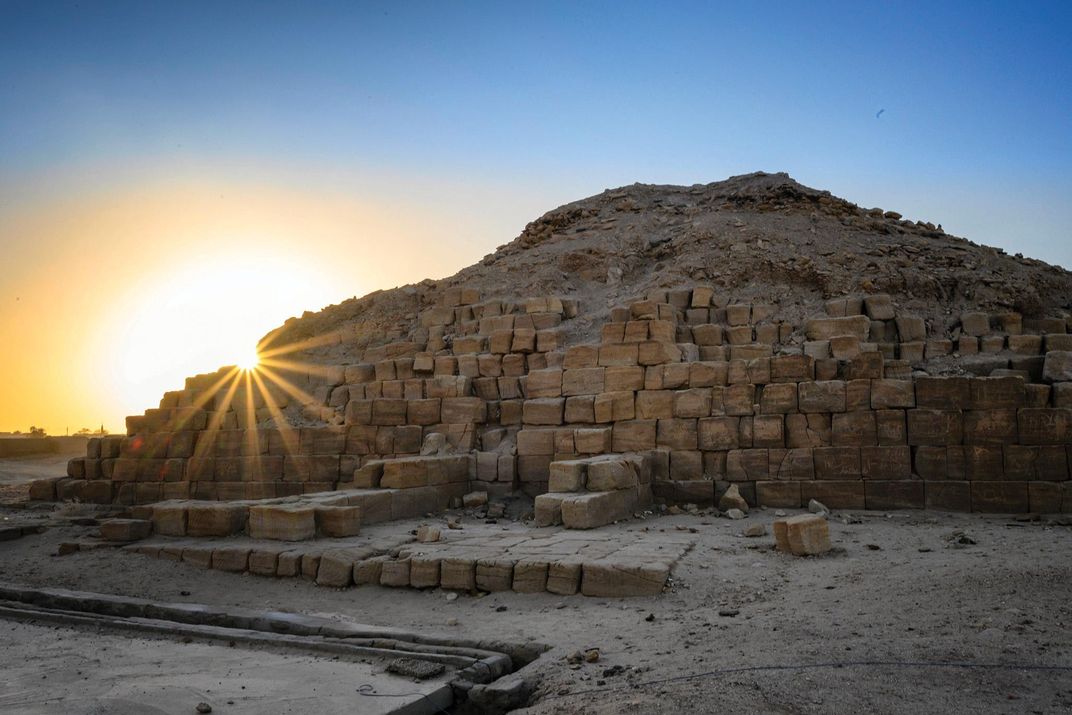
For years, European and American historians and archaeologists viewed ancient Kush through the lens of their own prejudices and that of the times. In the early 20th century, the Harvard Egyptologist George Reisner, on viewing the ruins of the Nubian settlement of Kerma, declared the site an Egyptian outpost. "The native negroid race had never developed either its trade or any industry worthy of mention, and owed their cultural position to the Egyptian immigrants and to the imported Egyptian civilisation," he wrote in an October 1918 bulletin for Boston's Museum of Fine Arts. It wasn't until mid-century that sustained excavation and archaeology revealed the truth: Kerma, which dated to as early as 3000 B.C., was the beginning capital of a powerful indigenous kingdom that expanded to encompass the country between the first cataract of the Nile in the due north and the fourth cataract in the s. The kingdom rivaled and at times overtook Egypt. This first Kushite kingdom traded in ivory, gold, bronze, ebony and slaves with neighboring states such as Egypt and aboriginal Punt, along the Red Body of water to the eastward, and it became famous for its blueish glazed pottery and finely polished, tulip-shaped red-brown ceramics.
Amidst those who starting time challenged the received wisdom from Reisner was the Swiss archeologist Charles Bonnet. Information technology took twenty years for Egyptologists to accept his argument. "Western archaeologists, including Reisner, were trying to find Egypt in Sudan, non Sudan in Sudan," Bonnet told me. Now 87, Bonnet has returned to Kerma to conduct field enquiry every twelvemonth since 1970, and has made several significant discoveries that accept helped rewrite the region's ancient history. He identified and excavated a fortified Kushite city nearby, known as Dukki Gel, which dates to the second millennium B.C.
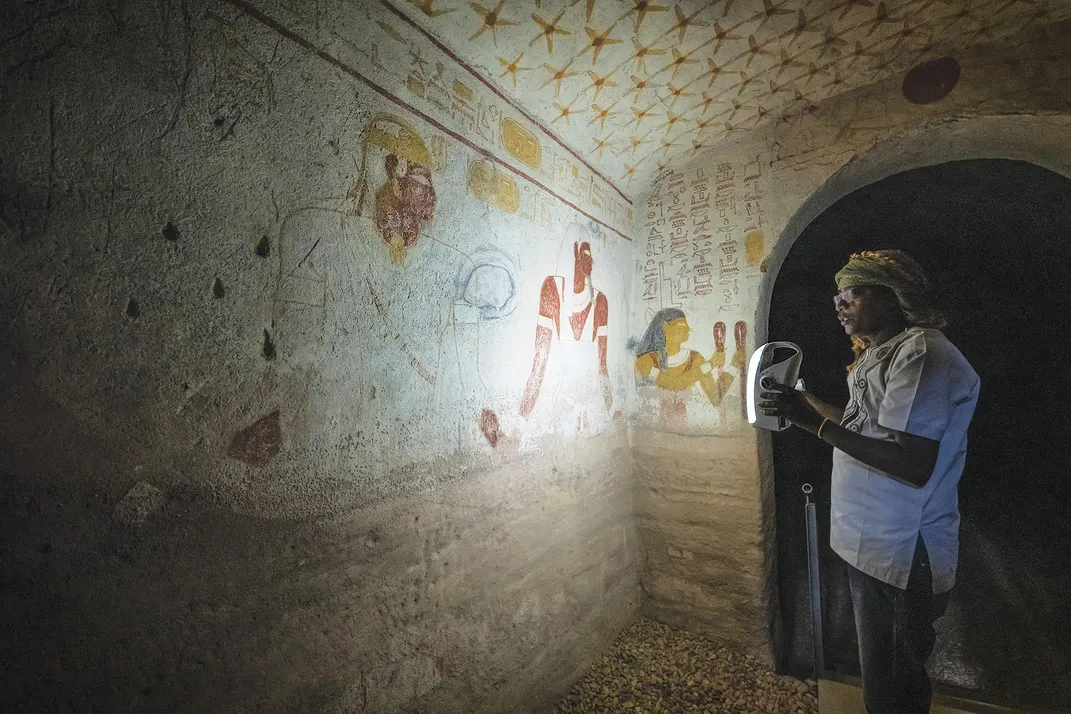
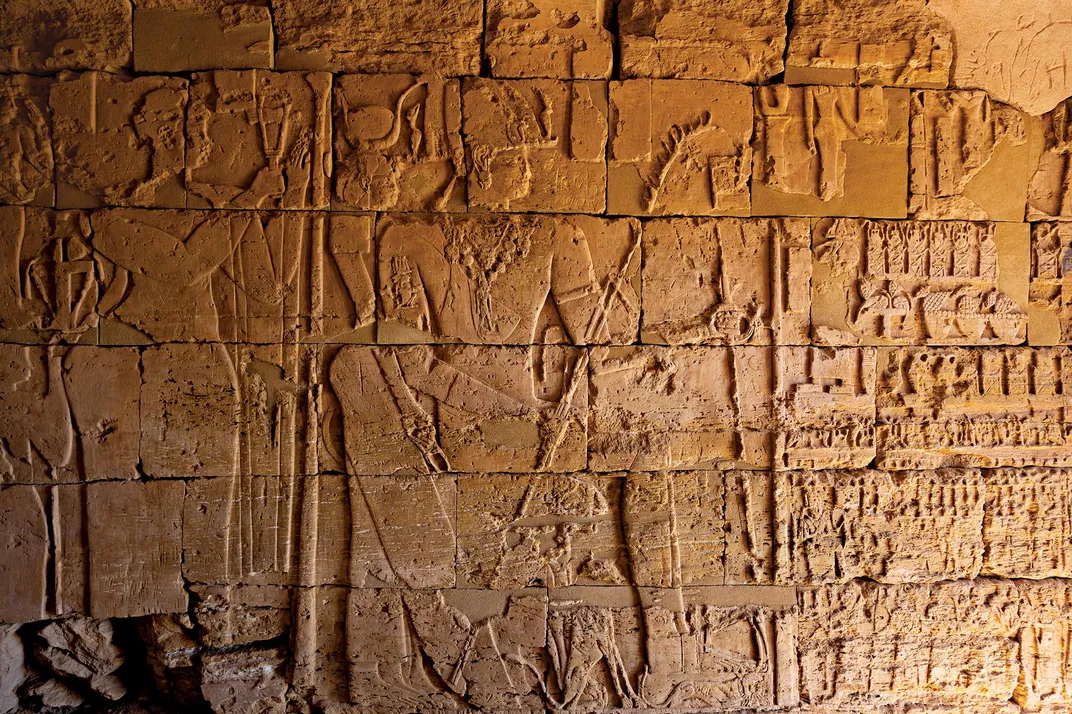
Around 1500 B.C., Egypt's pharaohs marched southward along the Nile and, subsequently conquering Kerma, established forts and temples, bringing Egyptian culture and religion into Nubia. Near the fourth cataract, the Egyptians built a holy temple at Jebel Barkal, a pocket-size flat-topped mountain uniquely situated where the Nile turns southward before turning northward again, forming the letter "South." It was this identify, where the sun is born from the "westward" bank—typically associated with sunset and decease—that aboriginal Egyptians believed was the source of Cosmos.
Egyptian dominion prevailed in Kush until the 11th century B.C. As Egypt retreated, its empire weakening, a new dynasty of Kushite kings rose in the city of Napata, about 120 miles southeast of Kerma, and asserted itself as the rightful inheritor and protector of aboriginal Egyptian organized religion. Piye, Napata's third king, known more ordinarily in Sudan equally Piankhi, marched north with an army that included horsemen and skilled archers and naval forces that sailed due north on the Nile. Defeating a coalition of Egyptian princes, Piye established Arab republic of egypt'south 25th Dynasty, whose kings are usually known equally the Black Pharaohs. Piye recorded his victory in a 159-line inscription in Middle Egyptian hieroglyphics on a stele of dark grayness granite preserved today in the Egyptian Museum in Cairo. He then returned to Napata to rule his newly expanded kingdom, where he revived the Egyptian tradition, which had been dormant for centuries, of entombing kings in pyramids, at a site called El-Kurru.
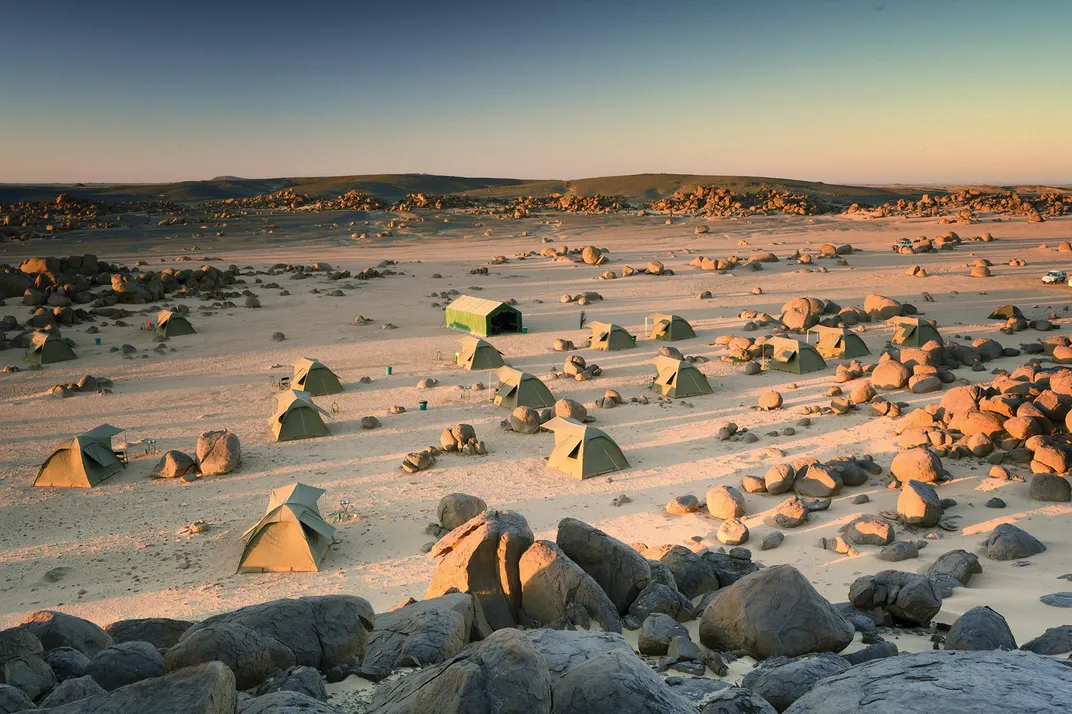
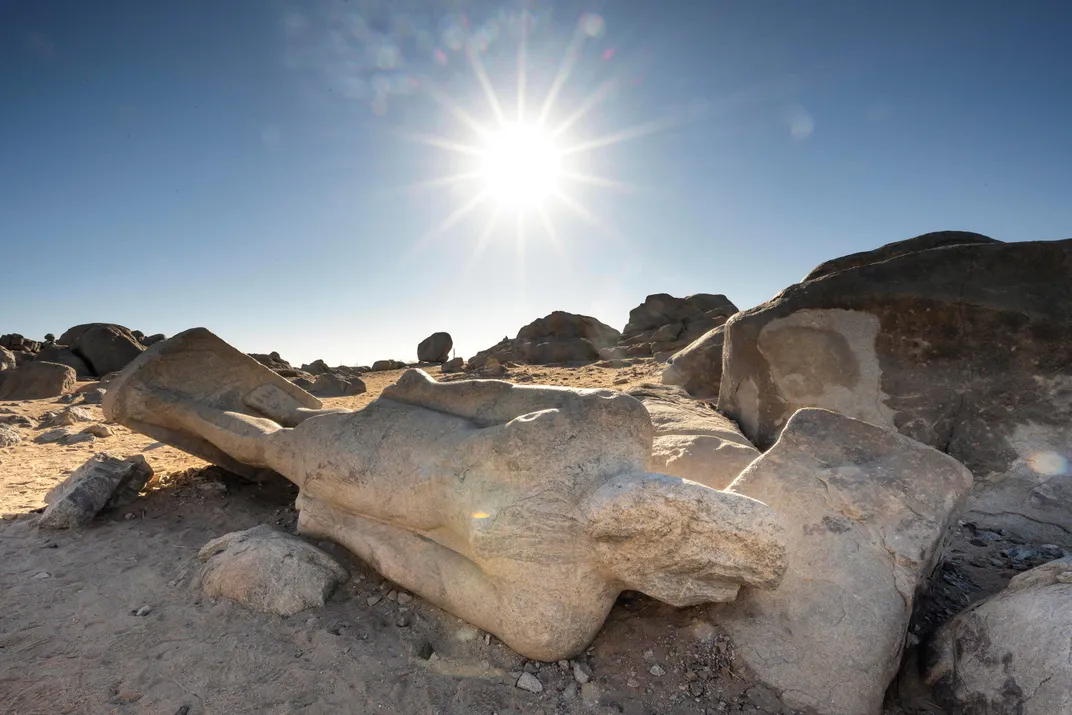
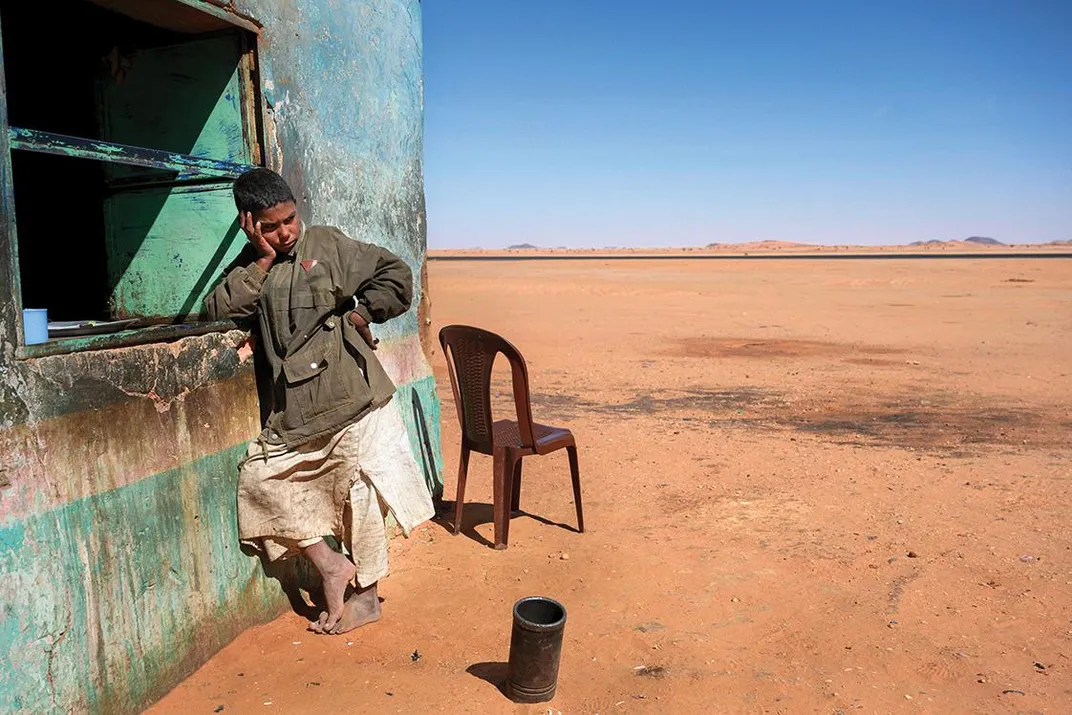
1 of Piye's sons, Taharqa, known in Sudan equally Tirhaka, was mentioned in the Hebrew Bible as an marry of Jerusalem'due south King Hezekiah. He moved the royal cemetery to Nuri, xiv miles abroad, and had a pyramid built for himself that is the largest of those erected to honour the Kushite kings. Archaeologists withal debate why he moved the royal cemetery. Geoff Emberling, an archaeologist at the Academy of Michigan who has excavated at El-Kurru and Jebel Barkal, told me that one explanation focusing on Kushite ritual is that Taharqa situated his tomb so that "the sunday rose over the pyramid at the moment when the Nile flooding is supposed to have arrived." But in that location are other explanations. "There might have been a political split," he said. "Both explanations might be true."
The Blackness Pharaohs' rule of Egypt lasted for nearly a century, but Taharqa lost control of Arab republic of egypt to invading Assyrians. Kickoff in the sixth century B.C., when Napata was repeatedly threatened by set on from Egyptians, Persians and Romans, the kings of Kush gradually moved their capital southward to Meroe. The city, at the junction of several important trade routes in a region rich in fe and other precious metals, became a bridge between Africa and the Mediterranean, and information technology grew prosperous. "They took on influences from outside—Egyptian influences, Greco-Roman influences, but also influences from Africa. And they formed their very ain ideas, their own architecture and arts," says Arnulf Schlüter, of the State Museum of Egyptian Fine art in Munich.
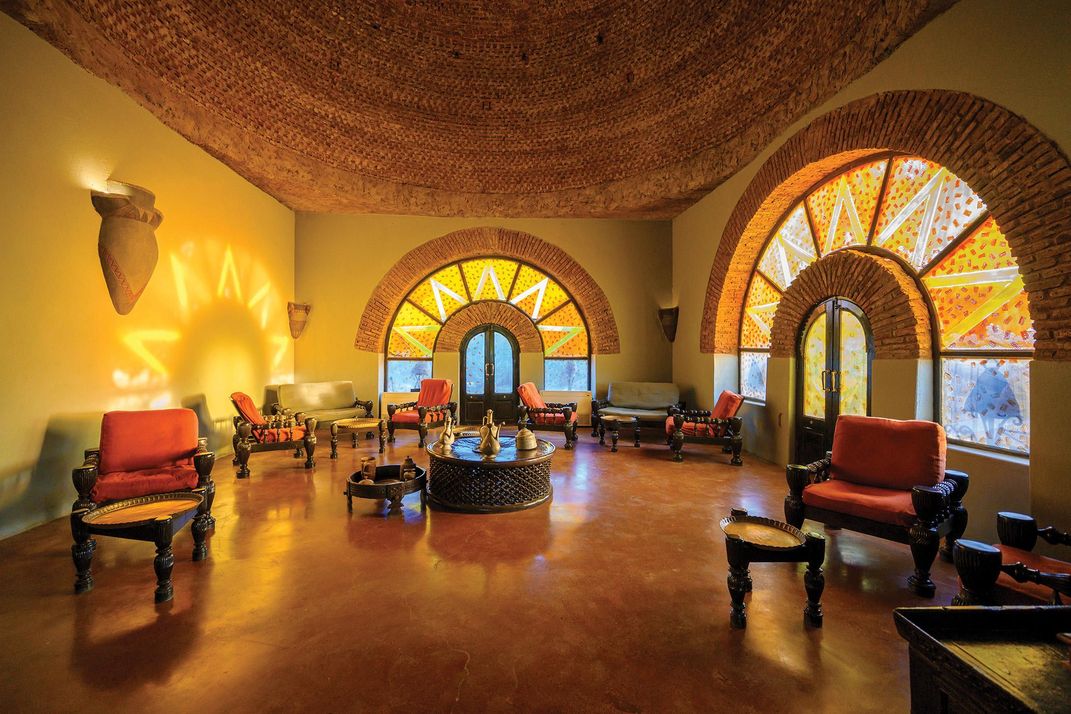
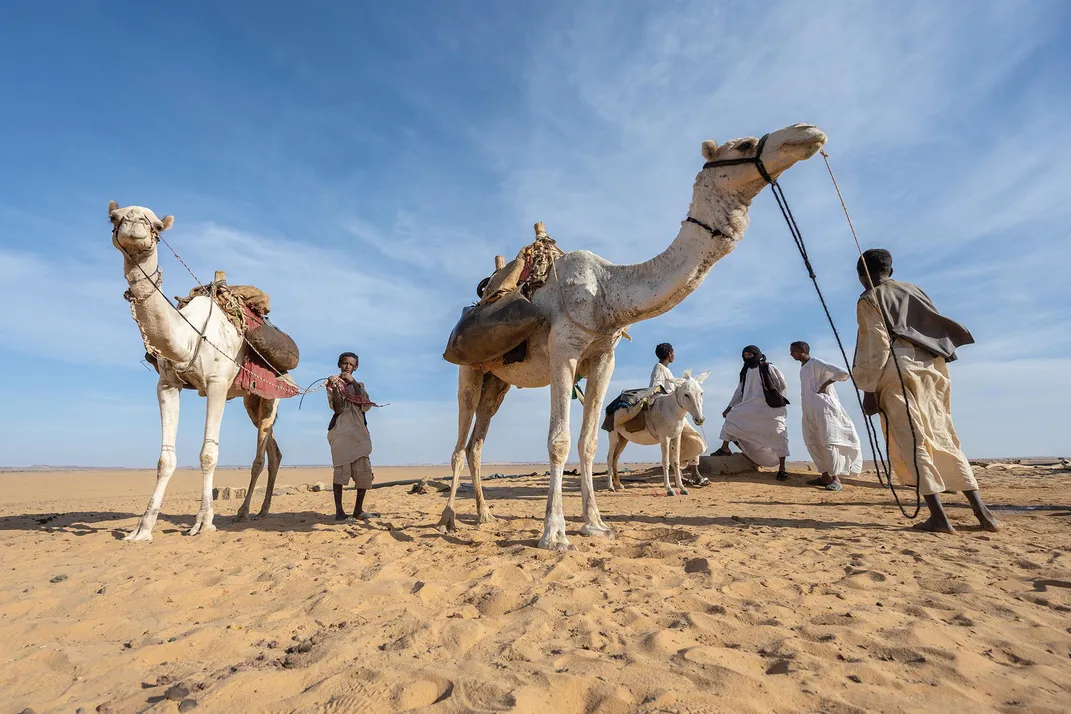
The pyramids in Meroe, which was named a Unesco World Heritage site in 2011, are undoubtedly the most hitting characteristic here. While they are non equally one-time or as large as the pyramids in Egypt, they are unique in that they are steeper, and they were non all dedicated to royals; nobles (at least those who could beget it) came to be cached in pyramids besides. Many Sudanese today are quick to point out that the number of standing ancient pyramids in the country—more 200—exceeds the number of those in Egypt.
Beyond from the pyramids is the imperial urban center, with surrounding grounds that are however covered in slag, prove of the city'due south large atomic number 26-smelting manufacture and a source of its economic power. Queens called by the title Kandake, known in Latin as "Candace," played a vital role in Meroitic political life. The most famous of them was Amanirenas, a warrior-queen who ruled Kush from roughly forty B.C. to ten B.C. Described by the Greek geographer Strabo, who mistook her title for her name, equally "a masculine sort of woman, and blind in one center," she led an army to fight off the Romans to the n and returned with a bronze statue head of Emperor Augustus, which she so buried in Meroe beneath the steps to a temple dedicated to victory. In the town of Naga, where Schlüter does much of his work, another kandake, Amanitore, who ruled from about i B.C. to A.D. 25, is portrayed beside her co-regent, Rex Natakamani, on the archway-gate wall of a temple dedicated to the indigenous panthera leo god Apedemak; they are depicted slaying their enemies—Amanitore with a long sword, Natakamani with a battle-ax—while lions rest symbolically at their feet. Many scholars believe that Amanitore's successor, Amantitere, is the Kushite queen referred to equally "Candace, queen of the Ethiopians" in the New Testament, whose treasurer converted to Christianity and traveled to Jerusalem to worship.
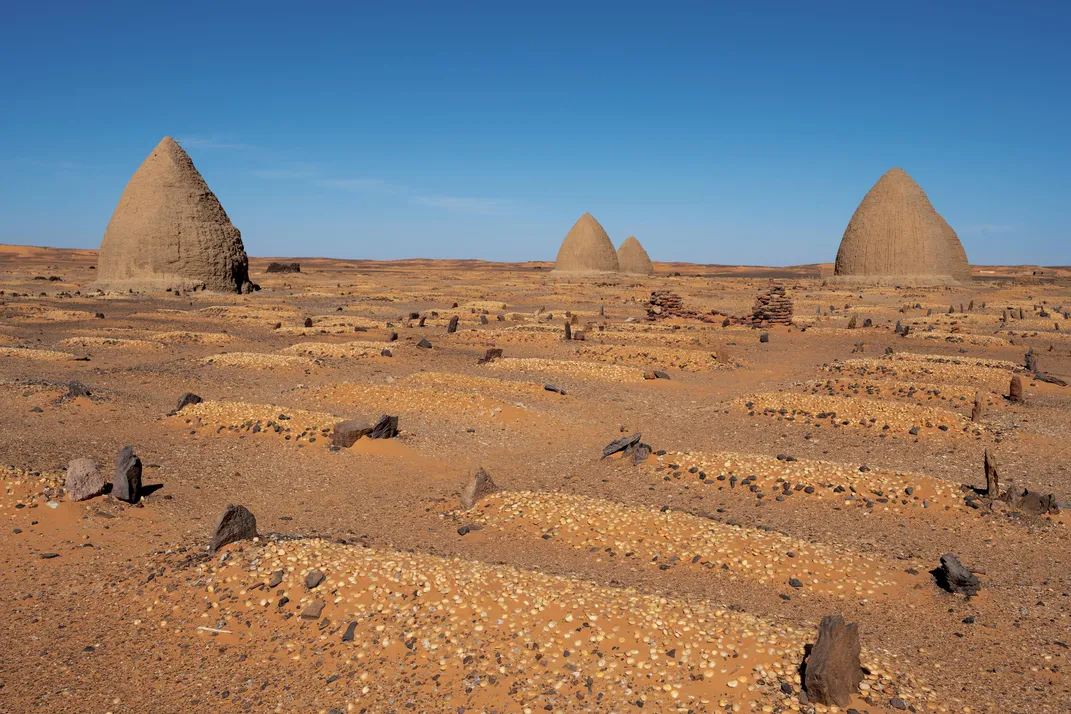
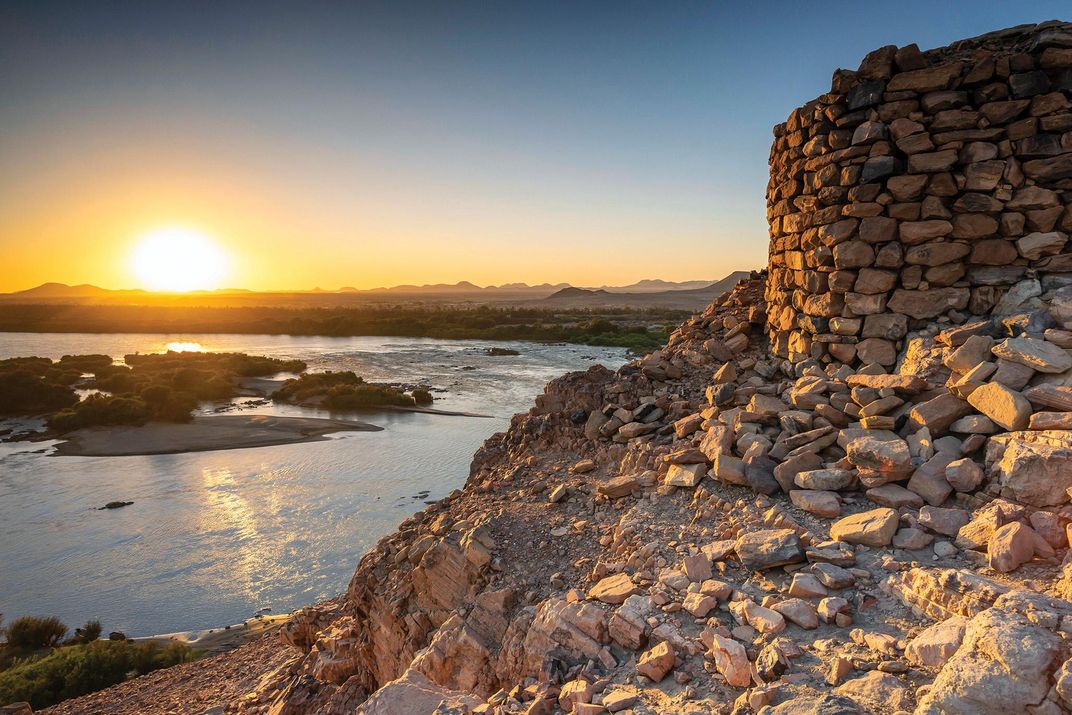
At another site not far abroad, Musawwarat es-Sufra, archaeologists withal wonder about the purpose that a big central sandstone complex, known as the Great Enclosure, might have served. It dates to the 3rd century B.C., and includes columns, gardens, ramps and courtyards. Some scholars have theorized that it was a temple, others a palace or a university, or even a army camp to train elephants for use in battle, because of the elephant statues and engravings found throughout the complex. There is nothing in the Nile Valley to compare it to.
By the 4th century A.D., the power of Kush began to wane. Historians give dissimilar explanations for this, including climatic change-driven drought and famine and the rise of a rival civilisation in the east, Aksum, in mod-24-hour interval Ethiopia.
For years, Kush's history and contributions to globe culture were largely ignored. Early European archaeologists were unable to see information technology as more than a reflection of Egypt. Political instability, neglect and underdevelopment in Sudan prevented adequate enquiry into the land'southward aboriginal history. Yet the legacy of Kush is important because of its distinctive cultural achievements and culture: it had its own linguistic communication and script; an economy based on trade and skilled work; a well-known expertise in archery; an agricultural model that allowed for raising cattle; and a distinctive cuisine featuring foods that reflected the local environment, such every bit milk, millet and dates. Information technology was a society organized differently from its neighbors in Egypt, the Levant and Mesopotamia, with unique city planning and powerful female royals. "At its height, the Kingdom of Kush was a dominant regional power," says Zeinab Badawi, a distinguished British-Sudanese journalist whose documentary series "The History of Africa" aired on the BBC earlier this twelvemonth. Kush'due south surviving archaeological remains "reveal a fascinating and uncelebrated ancient people the earth has forgotten."
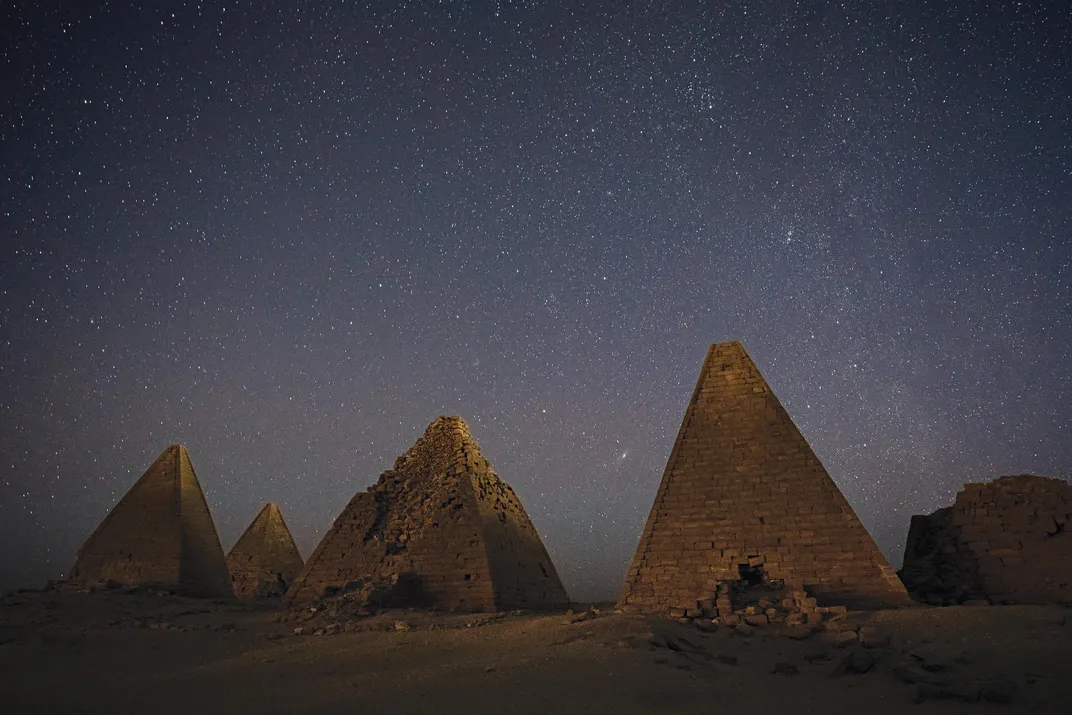
While Arab republic of egypt has long been explained in light of its connections to the Near E and the Mediterranean, Kush makes articulate the function that blackness Africans played in an interconnected ancient earth. Kush was "at the root of black African civilizations, and for a long time scholars and the full general public berated its achievements," Geoff Emberling told me. Edmund Barry Gaither, an American educator and director of Boston's Museum of the National Heart of Afro-American Artists, says that "Nubia gave black people their own identify at the table, even if information technology did non banish racist detractors." The French archaeologist Claude Rilly put it to me this way: "Simply as Europeans look at ancient Greece symbolically every bit their father or mother, Africans can look at Kush as their peachy antecedent."
Today, many do. In Sudan, where 30 years of authoritarian dominion ended in 2019 afterward months of popular protests, a new generation is looking to their history to find national pride. Among the near popular chants past protesters were those invoking Kushite rulers of millennia by: "My grandfather is Tirhaka! My grandmother is a Kandake!"
Intisar Soghayroun, an archeologist and a member of Sudan's transitional government, says that rediscovering the state'south ancient roots helped fuel the calls for modify. "The people were frustrated with the nowadays, so they started looking into their past," she told me. "That was the moment of revolution."

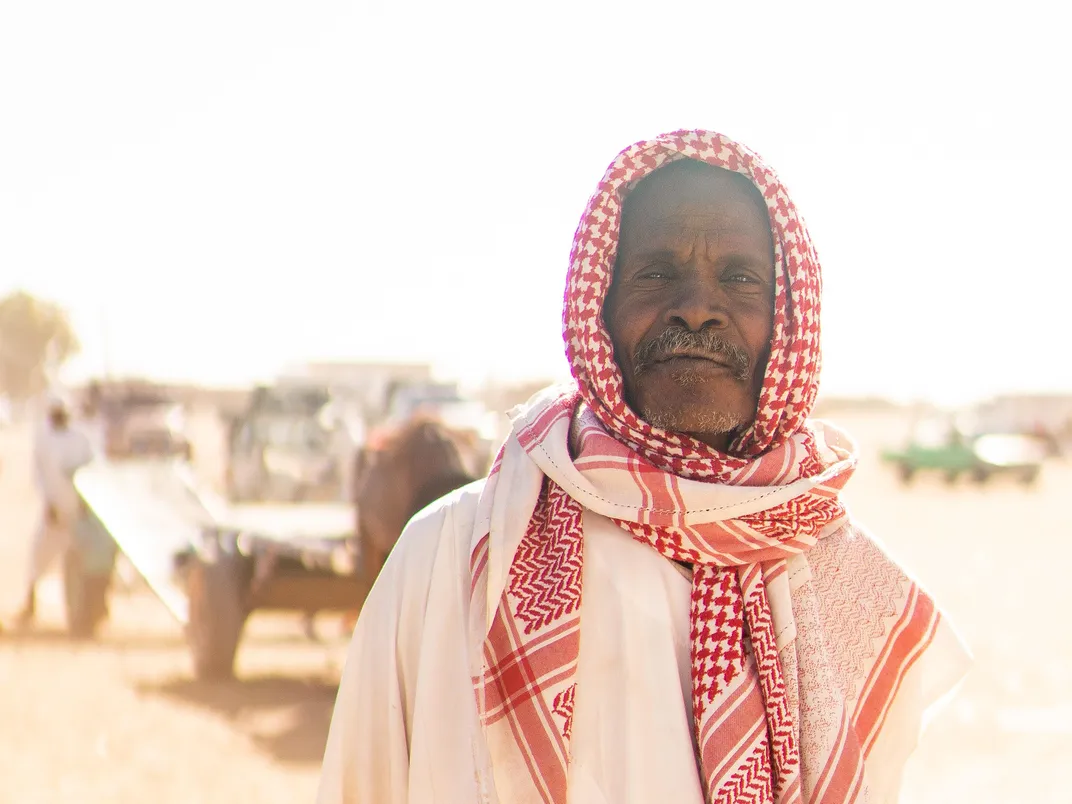
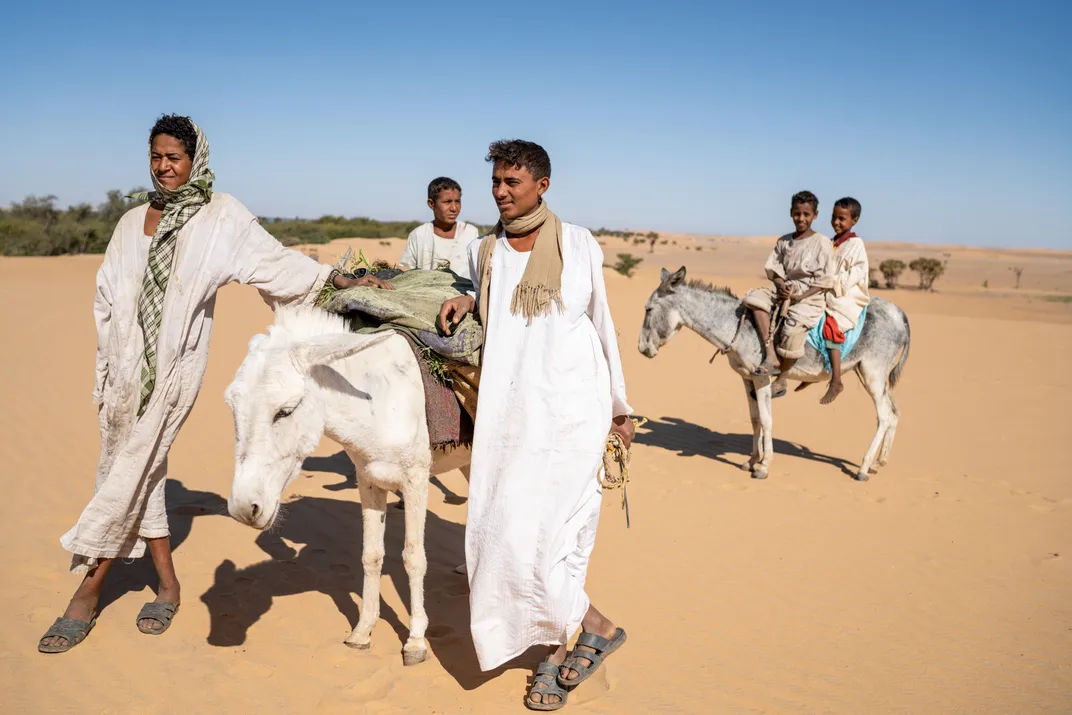
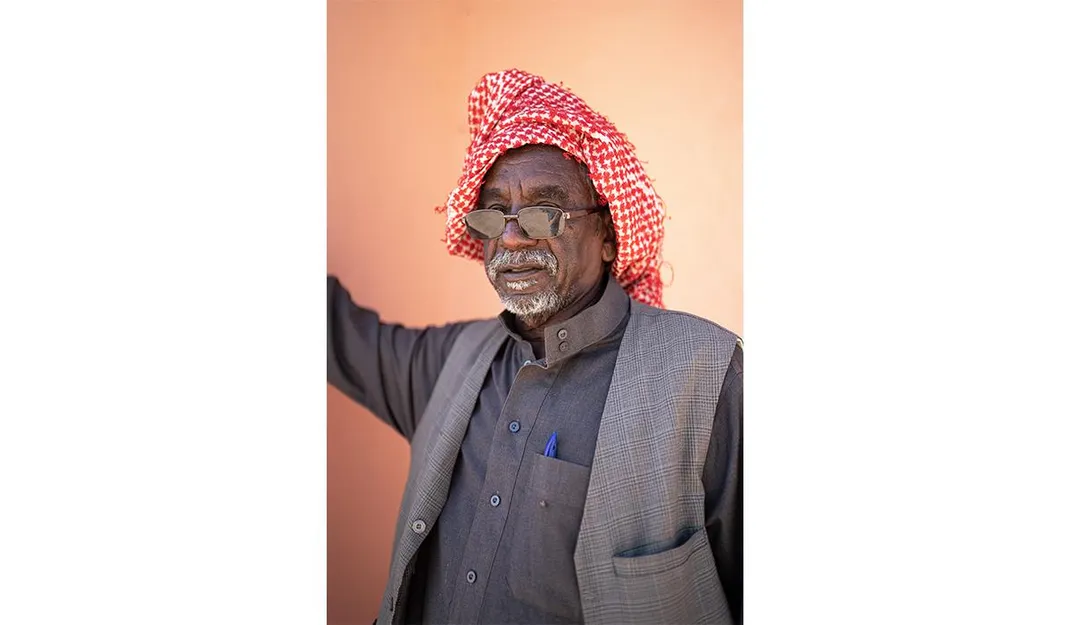
/https://tf-cmsv2-smithsonianmag-media.s3.amazonaws.com/filer/16/53/1653c9b6-6263-4e8e-ae35-8f9a63d7b2ec/medina_a_97_year_old_hassania_nomad_sits_in_her_tent_in_the_remote_bayuda_desert.jpg)
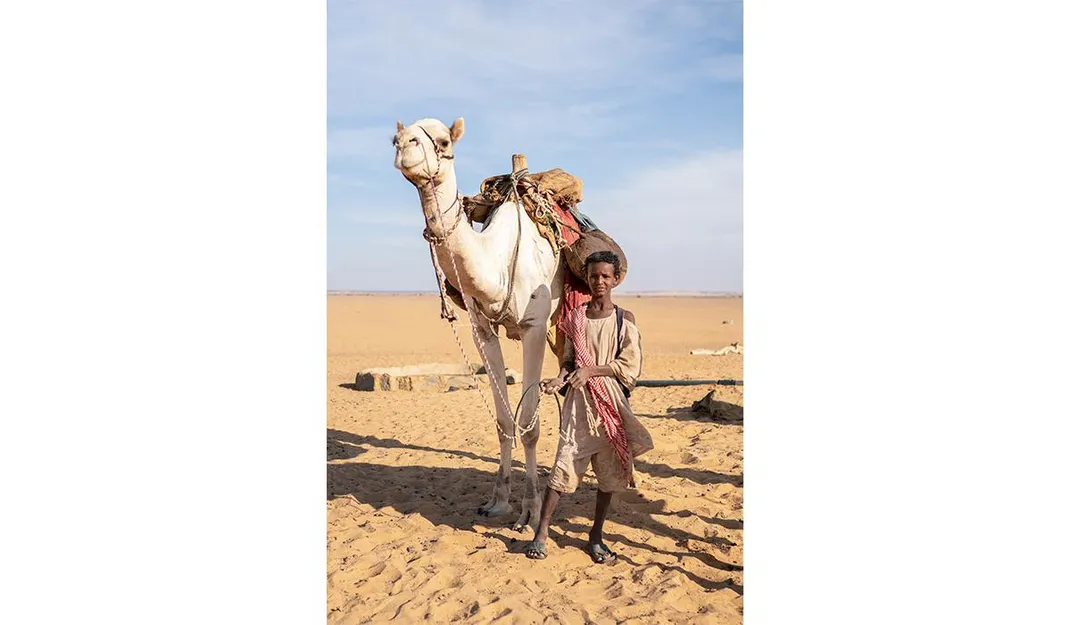
0 Response to "What Role Did Art Play in Ancient Kushs Civilization"
Post a Comment